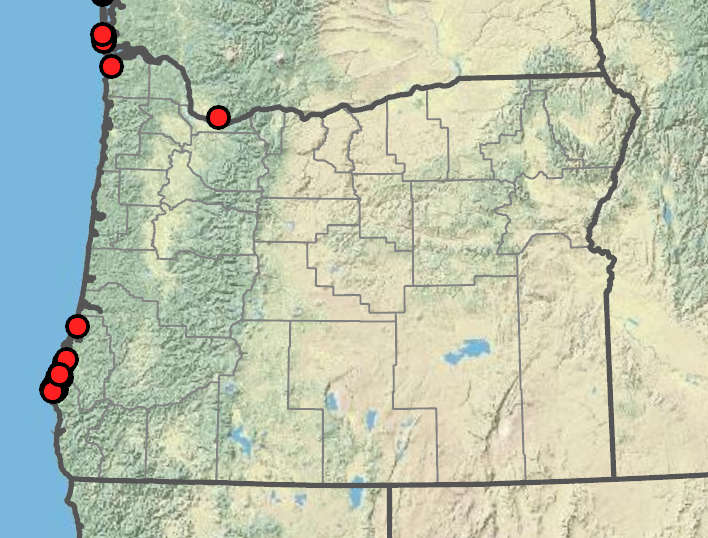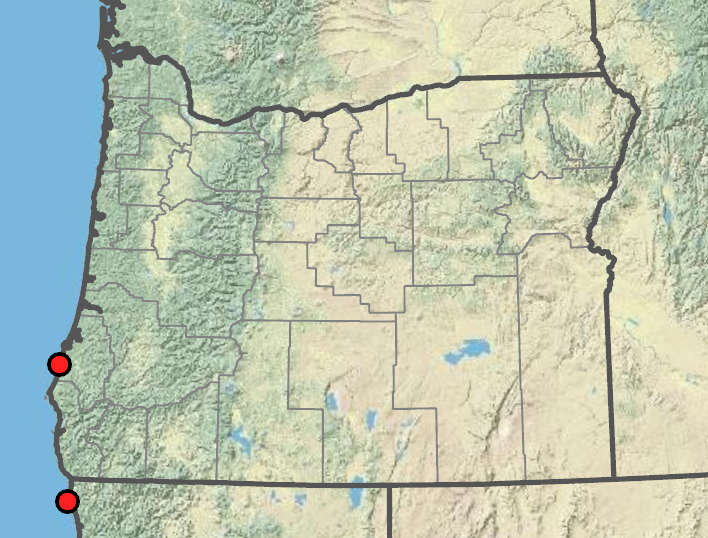Juncus canadensis
Juncus capitatus
Canada rush, Canadian rush
capitate rush, leafybract dwarf rush
basal and cauline; round; hollow, septate, 1–2 mm wide;
auricles 1–1.2 mm.
capillary;
basal.
panicles of 3–50 clusters; clusters 5–50-flowered, not obscured by inflorescence bract.
1(3) terminal head-like clusters, 2–15(26) flowers per cluster;
inflorescence bracts leafy and longer than inflorescence.
tepals 6, green; reddish, or pale brown;
tips acuminate;
stamens 3;
filaments 0.8–1.5 mm;
anthers 0.3–0.5 mm;
styles 0.2–0.3 mm.
tepals 6, brown; outer longer than and more acuminate than the inner;
stamens 3;
filaments 0.6–1.3 mm;
anthers 0.2–0.6 mm;
styles 0.3–0.5(1) mm.
usually 0–1 mm longer than the tepals, dark brown, 1-chambered.
shorter than the tepals, brown; reddish brown or dark brown.
narrowly ellipsoid to linear, 1.25–1.9 × 0.2–0.25 mm;
bodies 0.5– 0.8 mm; tails 0.3–0.5 mm, 0.5–1 times as long as seed body.
0.25–0.35 × 0.15–0.2 mm, slightly reticulate (at 10×).
=80.
=18.
Juncus canadensis
Juncus capitatus
Shores, ponds, peatlands, disturbed sandy acidic wet ground, cranberry farms, ditches. 0–100 m. Est. WA; north to British Columbia; eastern North America; Europe, New Zealand. Exotic.
This species was introduced by cranberry agriculture and is spreading into natural wetlands. Some authors suggest rare flowers have 6 stamens.
Moist bare ground. 50–1000 m. Est. CA; southeastern US, South America; Africa, Australia, Eurasia, New Zealand. Exotic.
This species was discovered in Oregon in 2010 on the Oregon Islands National Wildlife Refuge by Dave and Diane Bilderback. The large involucral bract is distinctive among our annuals.
Peter Zika
Peter Zika
- Local floras:
BC,
OR,
WA
- Local Web sites:
Flora NW,
PNW Herbaria
WildflowerSearch
iNaturalist (observations)
USDA Plants Database
- LBJ Wildflower Center
- SEINet
- Plants of the World Online
- Encyclopedia of Life
- Wikipedia
- Google Image Search

